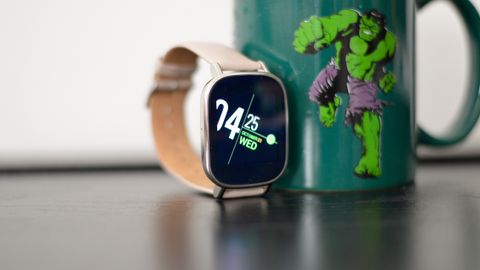Why you can trust TechRadar
The Asus ZenWatch 2 hasn't changed too much specs-wise. The watch still runs on a Qualcomm Snapdragon 400 at 1.2GHz with 512MB of RAM and 4GB of storage, much like the rest of the current Android Wear family.
However, there are fewer sensors packed into the newer smartwatch. Specifically, the ZenWatch 2 has a 6-axis gyrometer and accelerometer, instead of the 9-axis with heart rate monitor.
That's right, in an age where sensors reign supreme (looking at you, Microsoft Band 2), Asus decided to nix the biosensor. It sounds nutty, but honestly, fitness fiends likely won't be attracted to the ZenWatch, let alone its sequel. Additionally, biosensors are hardly accurate in the majority of smartwatches. Maybe when they get better, Asus will incorporate them. In the meantime, you'll have to make do with the pedometer.
There's also a built in microphone, Bluetooth connectivity and Wi-Fi capabilities. None of this is news, but it's great for the latest Android Wear operating system that it runs on.
In short, it means that the ZenWatch 2 can connect over Wi-Fi without your phone nearby and get notifications.
The environmental resistance rating here is an IP67, so the watch is completely dust proof – light splashes should be fine, just don't get it wet in the shower or take it swimming. It technically can handle submersion up to 1 meter (3.3 feet) of water for up to 30 minutes but for the sake of your watch, I don't recommend it.
Performance and interface
The incorporation of Android Wear 6.0 is a nice change from the previous operating system (OS). Many other Android Wear smartwatches – like the LG Watch Urbane and Moto 360 – have already received their updates, so we know what the OS can do.
Your basic notification and information cards pop up vertically from the bottom of the screen. You can flick through the available cards, and swiping from left to right will remove a card from the list. Moving your finger in the opposite direction will take you to more options.
Swiping left from the home watch face's edge will take you to the apps drawer. Your most recent app will be at the top of the scrolling list. Swiping left again brings you to a contacts page from which you can send and read messages.
Another swipe in that direction takes you to Google-specific commands, like taking notes or vocalizing reminders and setting alarms. You can also draw out emojis to save or send out.
Cameron is a writer at The Verge, focused on reviews, deals coverage, and news. He wrote for magazines and websites such as The Verge, TechRadar, Practical Photoshop, Polygon, Eater and Al Bawaba.

Inside the company making 35-year-old Game Boys look and work like new

AMD teams up with Arm to unveil AI chip family that does preprocessing, inference and postprocessing on one silicon — but you will have to wait more than 12 months to get actual products

The US takes another big step towards banning TikTok – here's what you need to know

